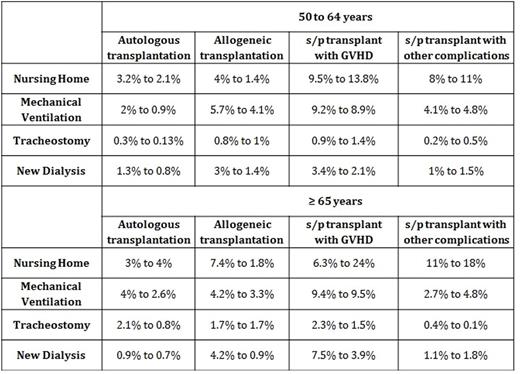Abstract
Background:.The disposition and complications of hematopoietic stem cell transplant (HSCT) in the geriatric population has not been extensively studied and compared with younger patients. We have analyzed a database with nationwide representation for outcomes of HSCT in these patients over a 12 year period.
Methods: Data regarding patients who underwent HSCT was extracted from the Nationwide Inpatient Sample (NIS) from 2000 to 2011 using ICD-9-CM codes. HSCT hospitalizations were classified into allogeneic transplantation, autologous transplantation, subsequent hospitalization (s/p transplant) with graft versus host disease (GVHD) and subsequent hospitalization (s/p transplant) with other complications. NIS variables were used to identify in-hospital complications and discharge disposition. Chi square test and Wilcoxon rank test were used to compare categorical and continuous variables respectively.
Results: The proportion of elderly patients (≥ 65 years) receiving autologous transplants and being discharged to nursing homes has increased over the past decade when compared to a younger patient population. Notably, the rate of major complications: mechanical ventilation, tracheostomy and requirement of new dialysis are similar in both the patient populations. The trends from 2000 to 2011 are summarized in Table 1.
Conclusion: Although the rate of transplant-associated complications are similar in geriatric and non-geriatric populations, a higher percentage of geriatric cancer patients who receive HSCT are discharged to nursing homes. These rates have not significantly changed over the past decade (p > 0.05). More medical services and resources will be required to support the growing elderly population undergoing HSCT.
No relevant conflicts of interest to declare.
Author notes
Asterisk with author names denotes non-ASH members.


This feature is available to Subscribers Only
Sign In or Create an Account Close Modal